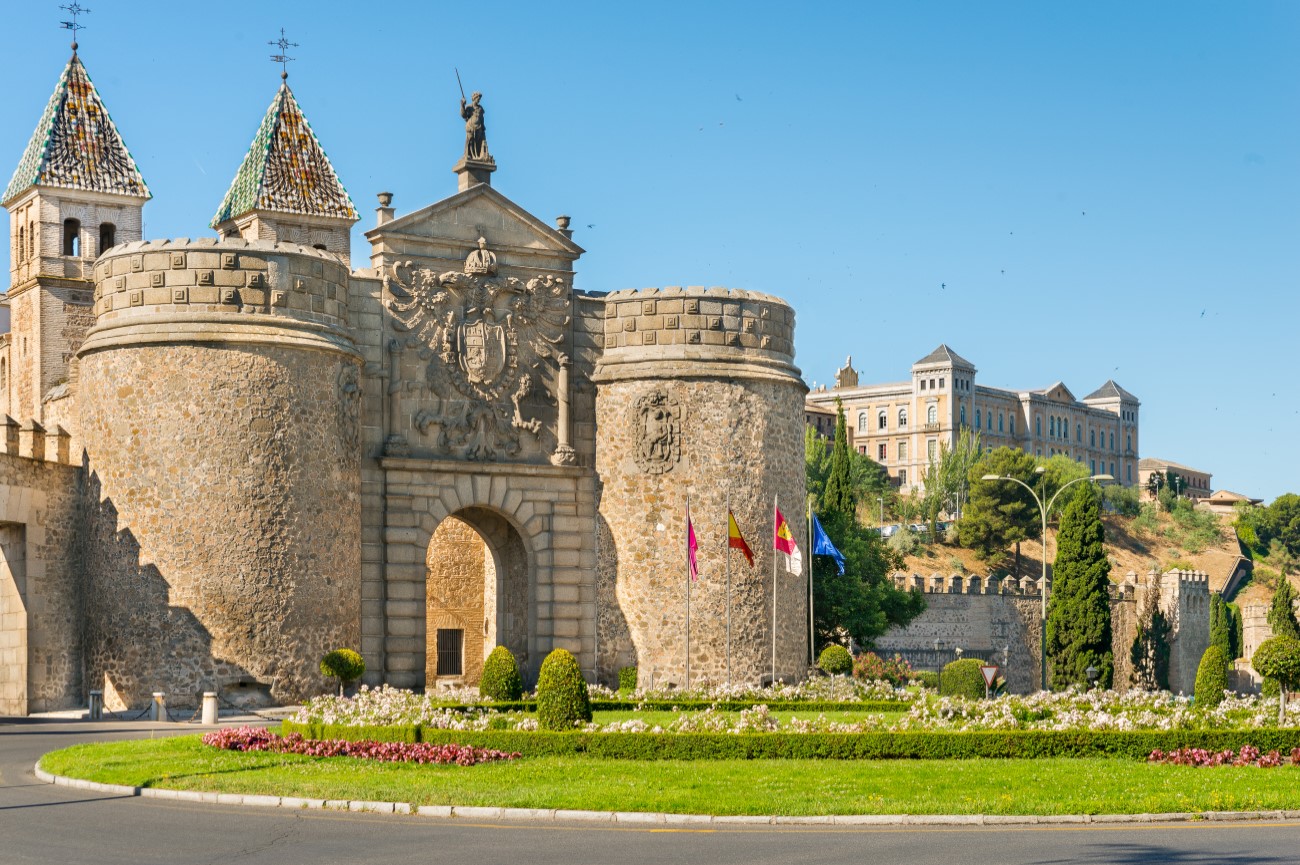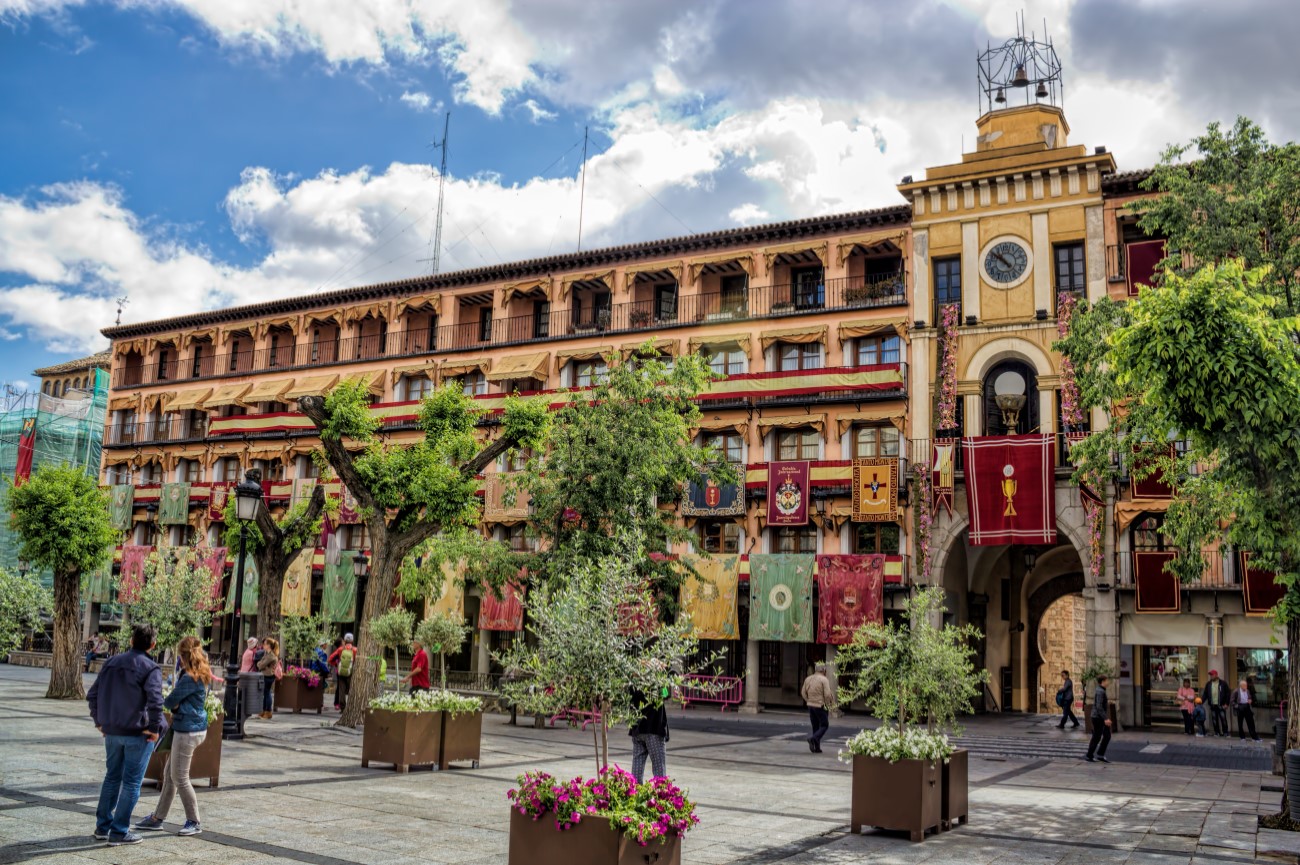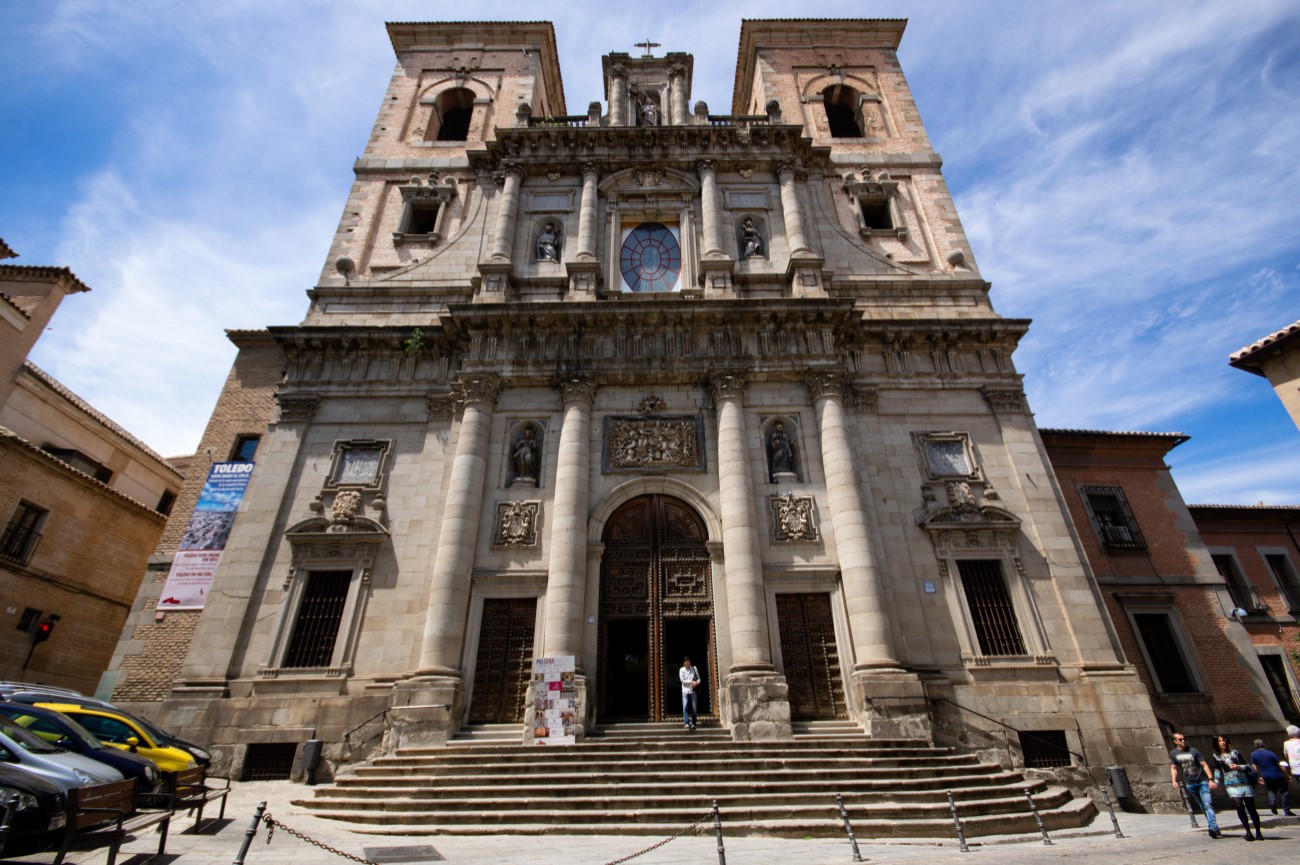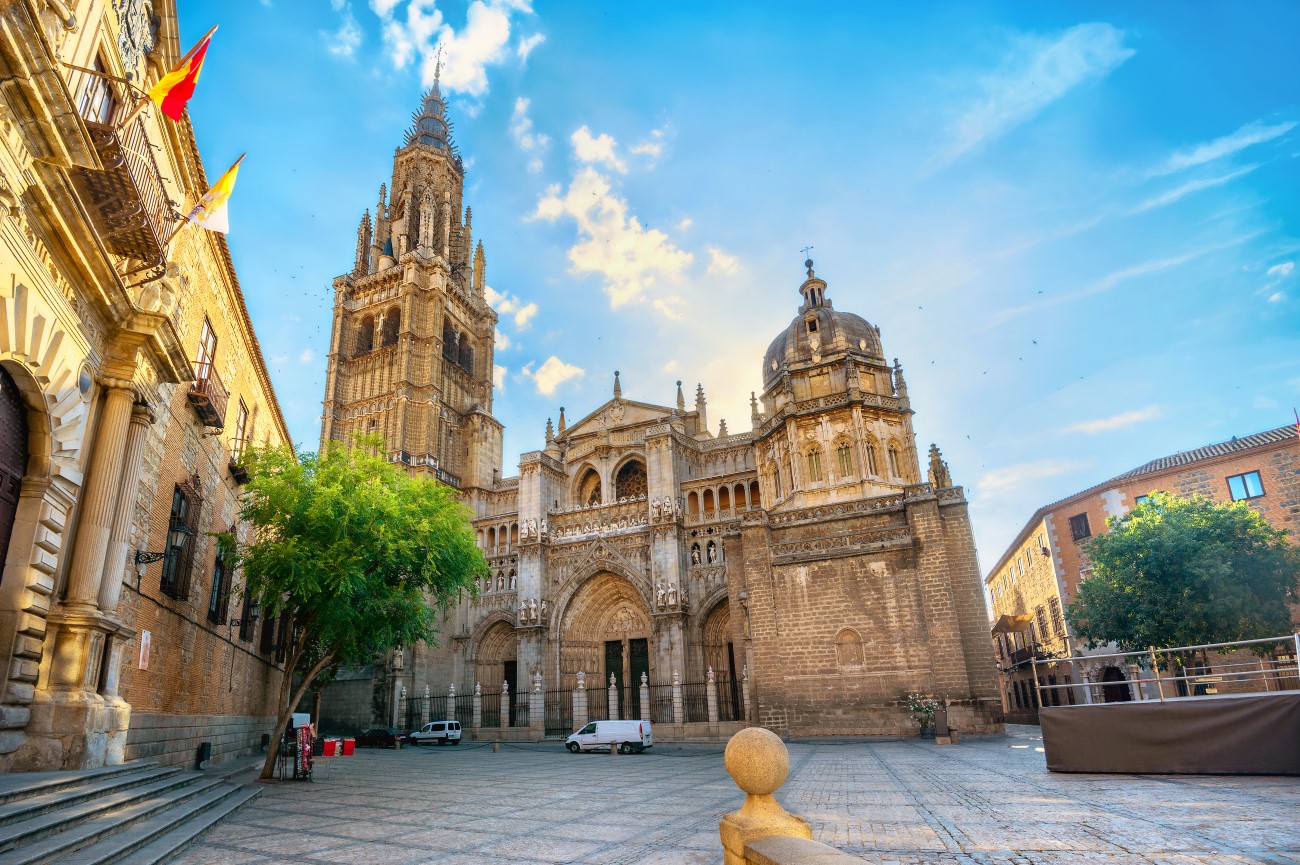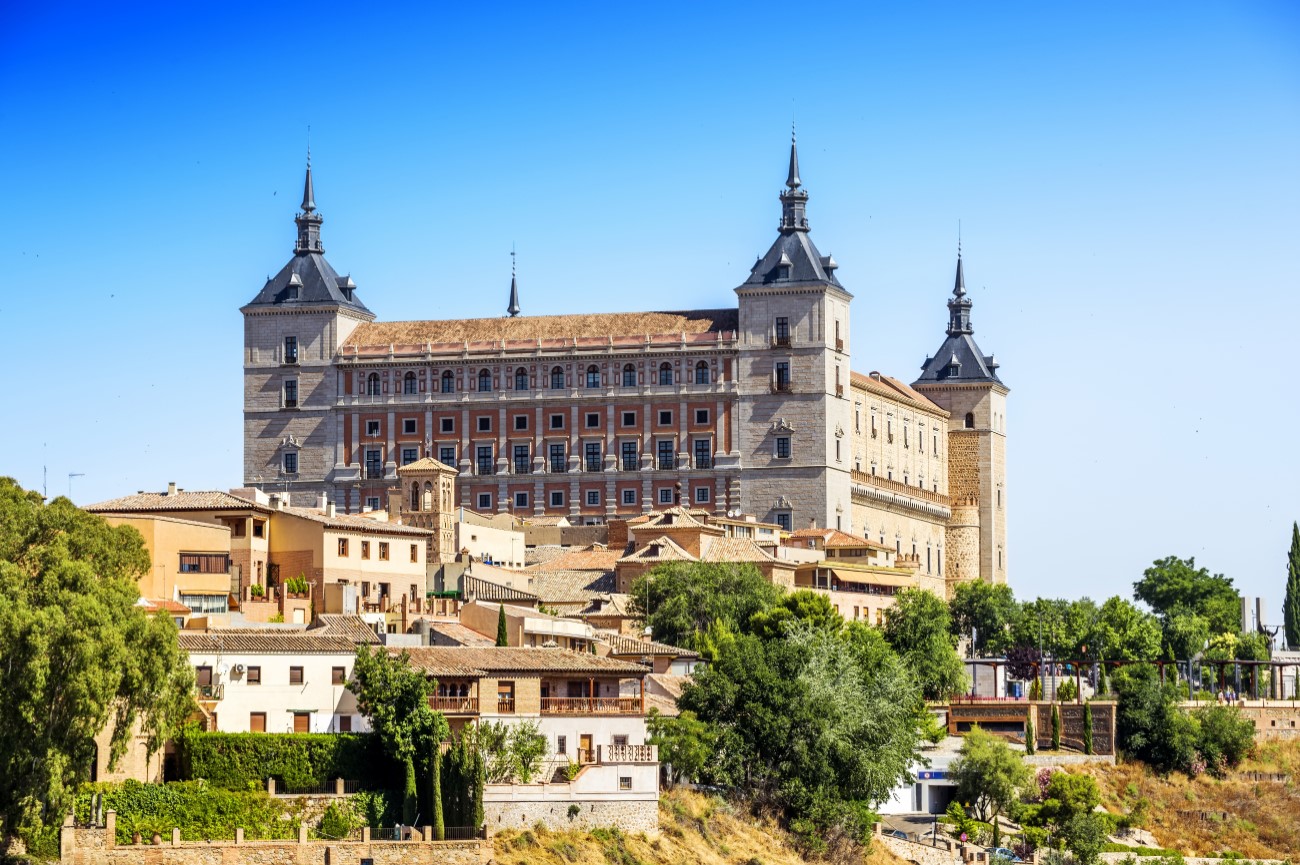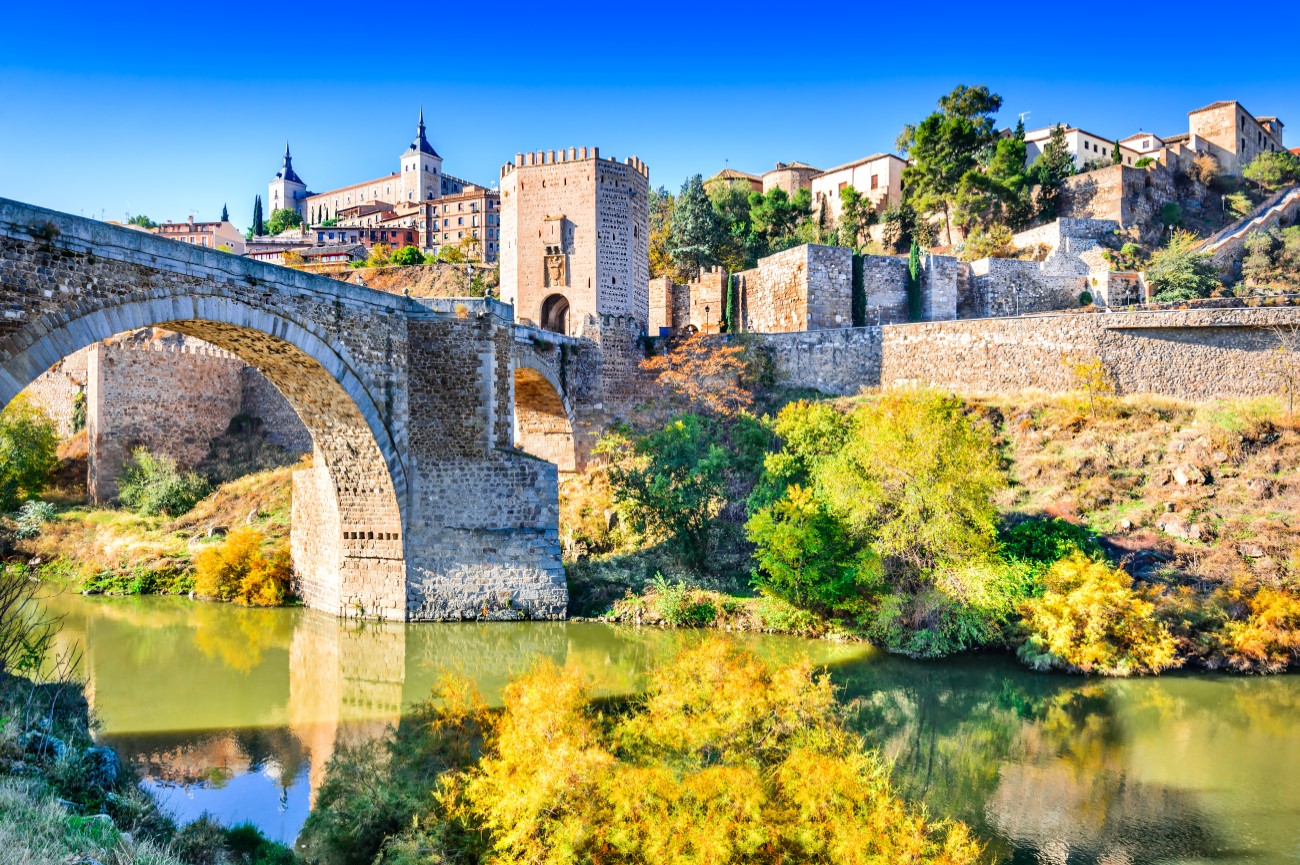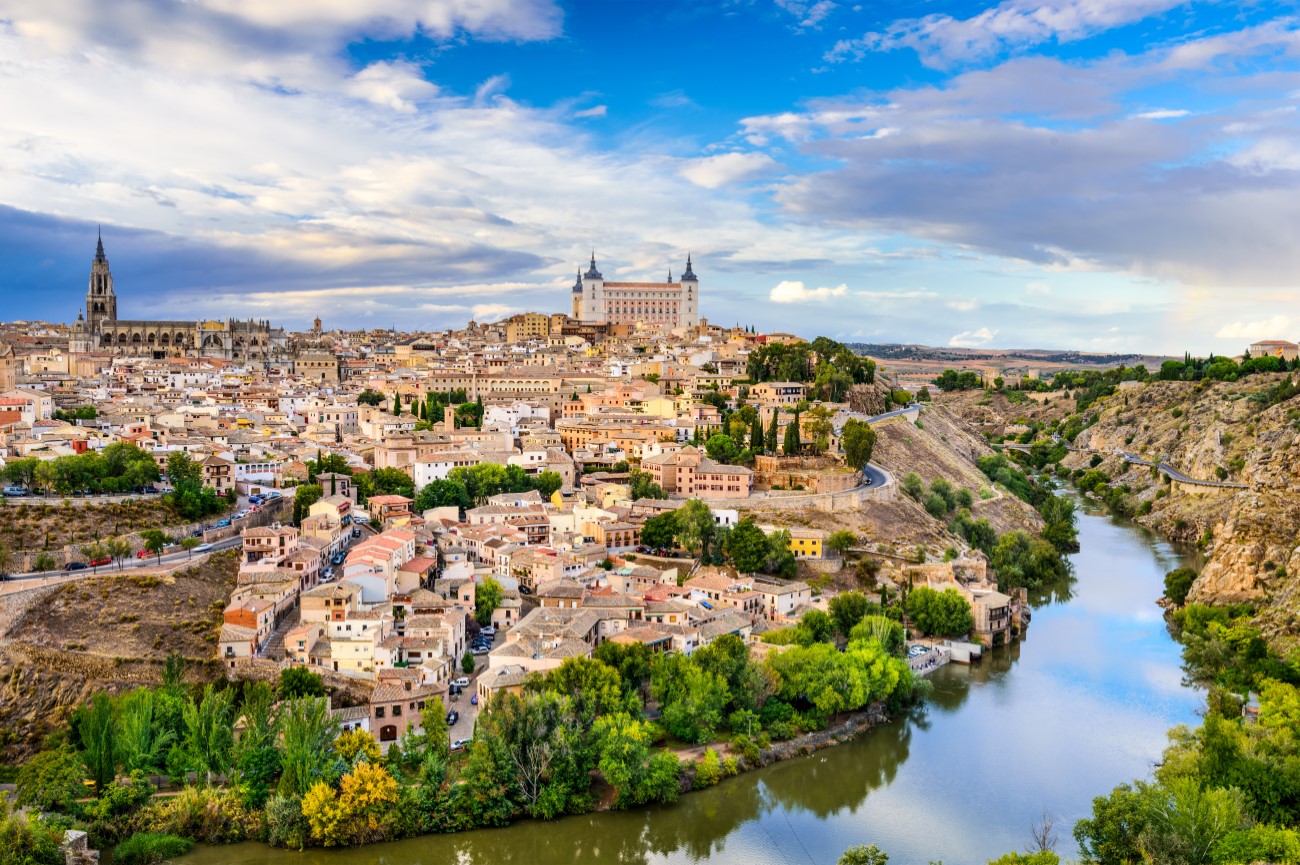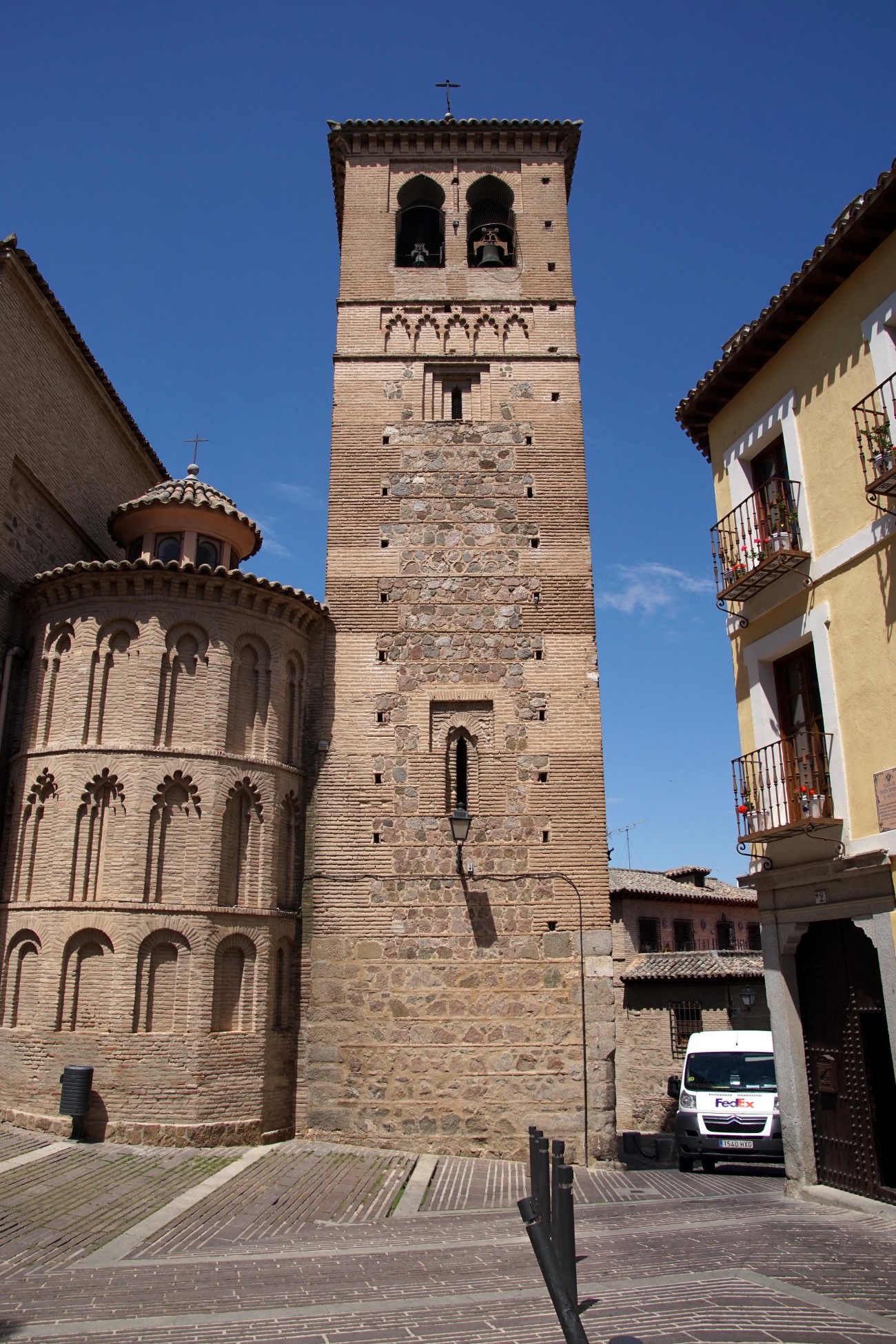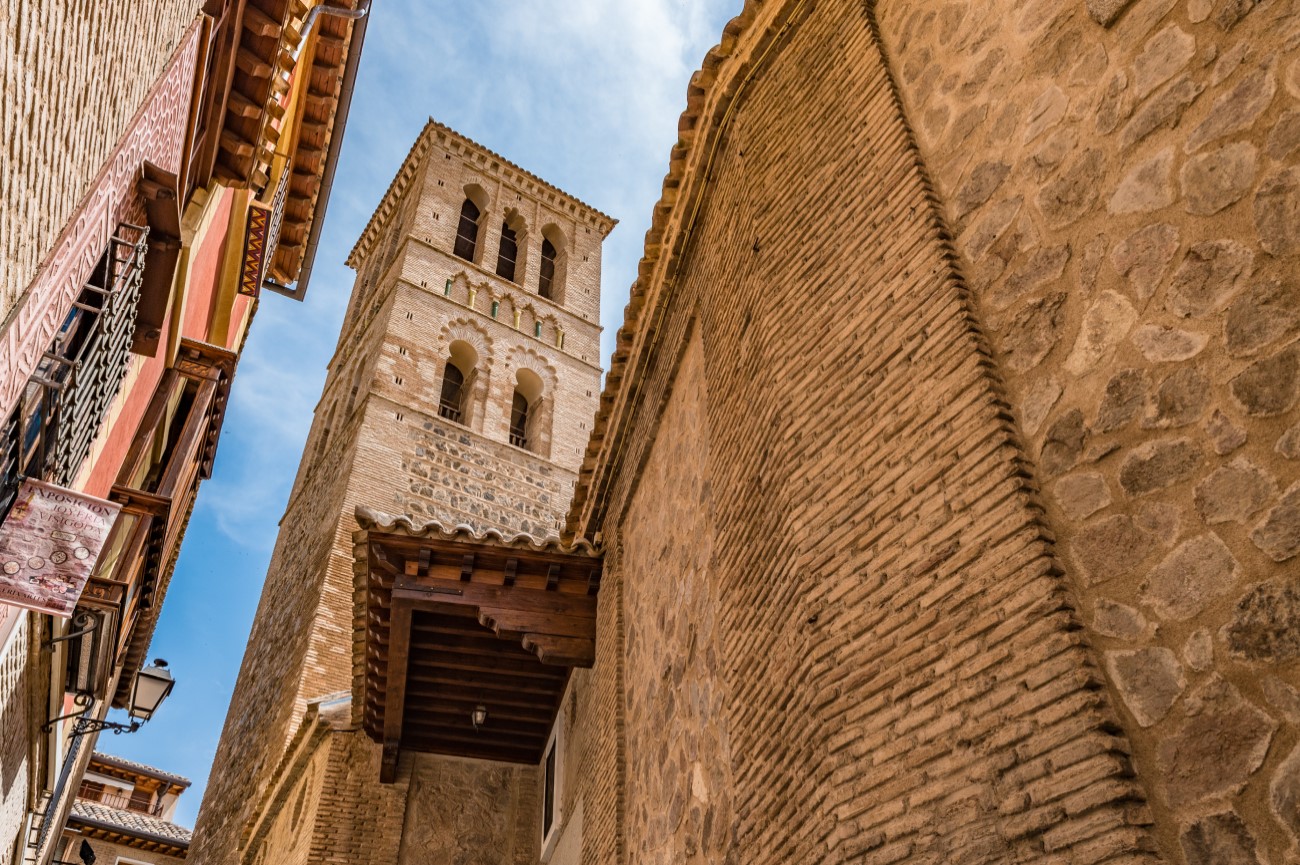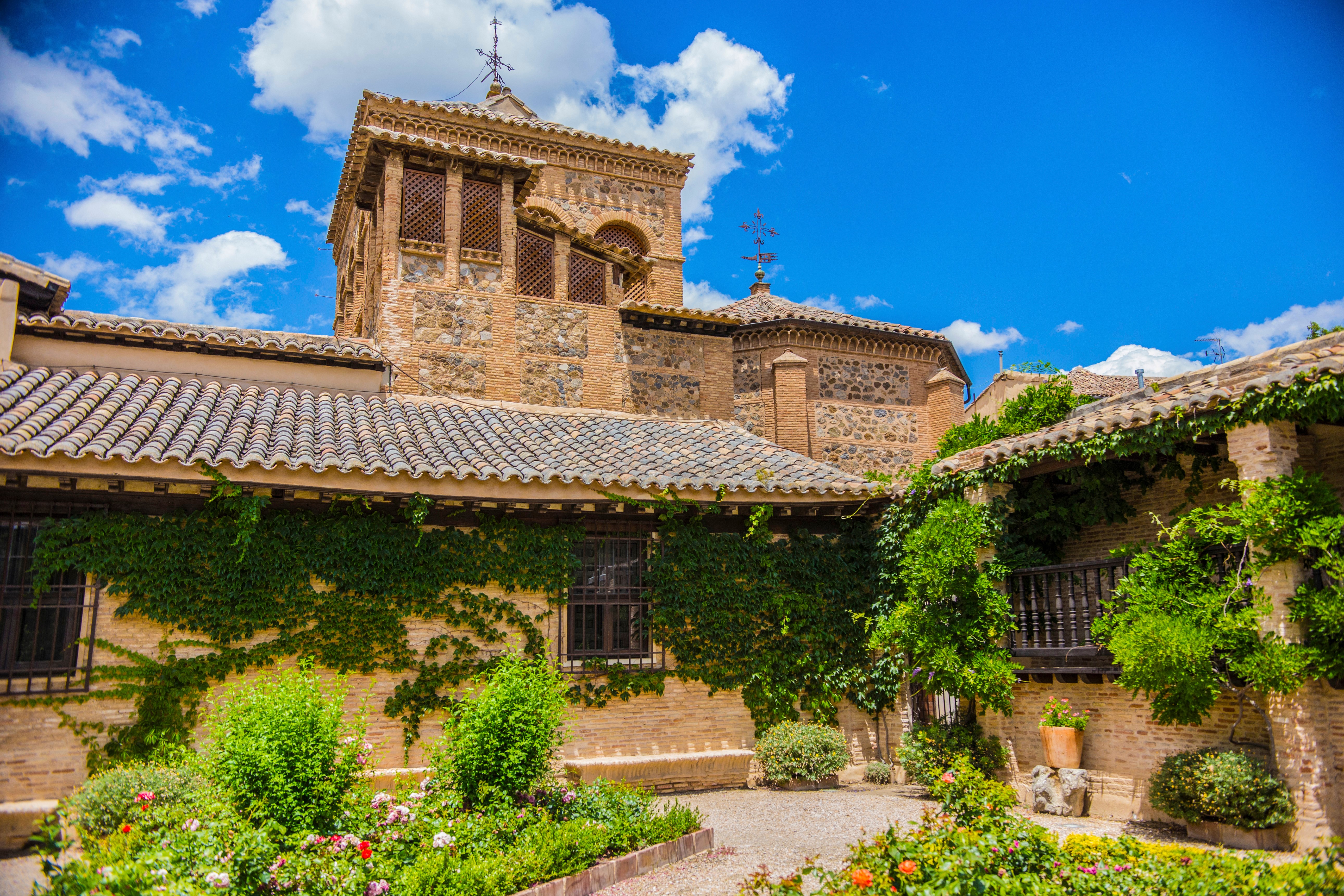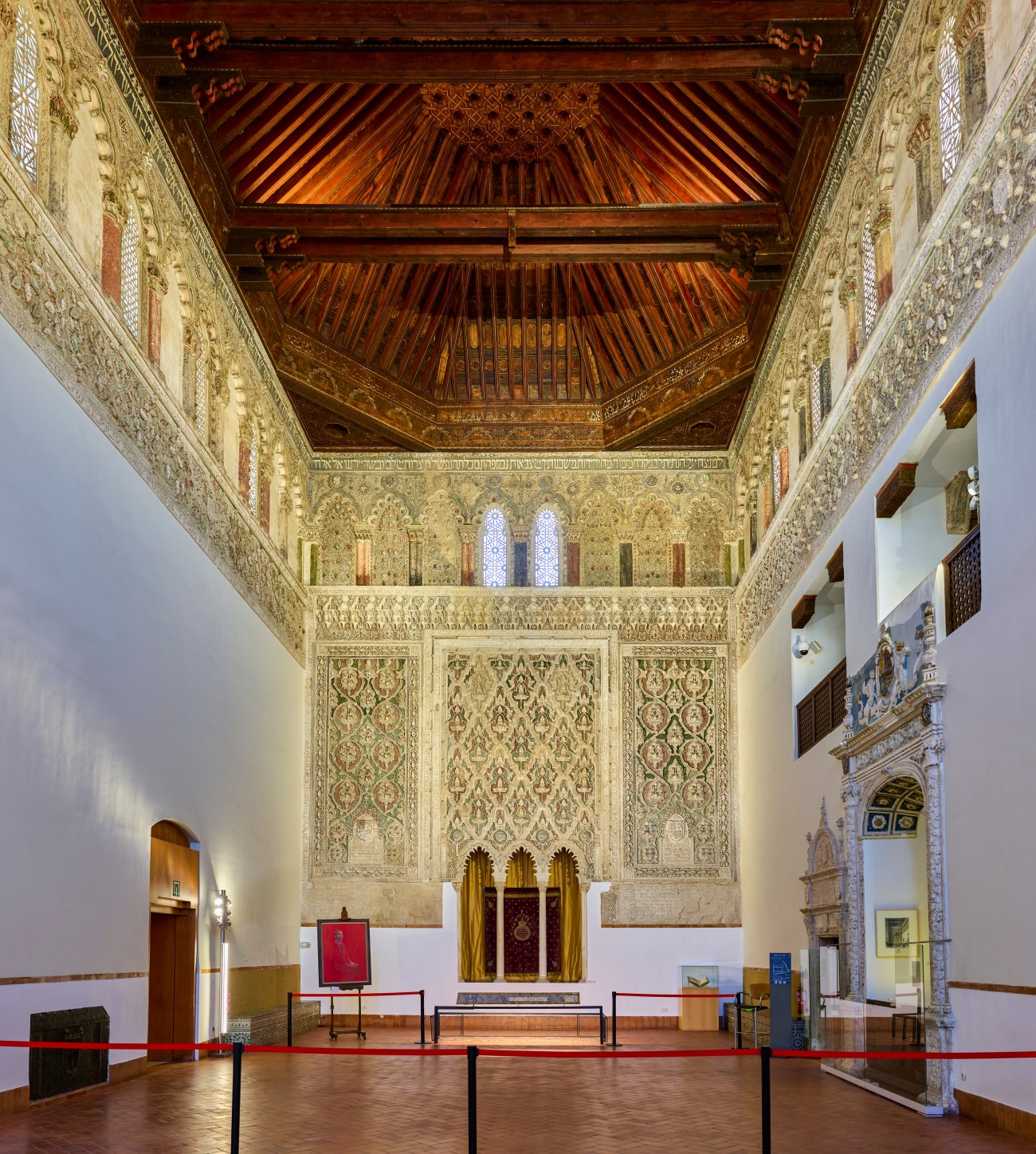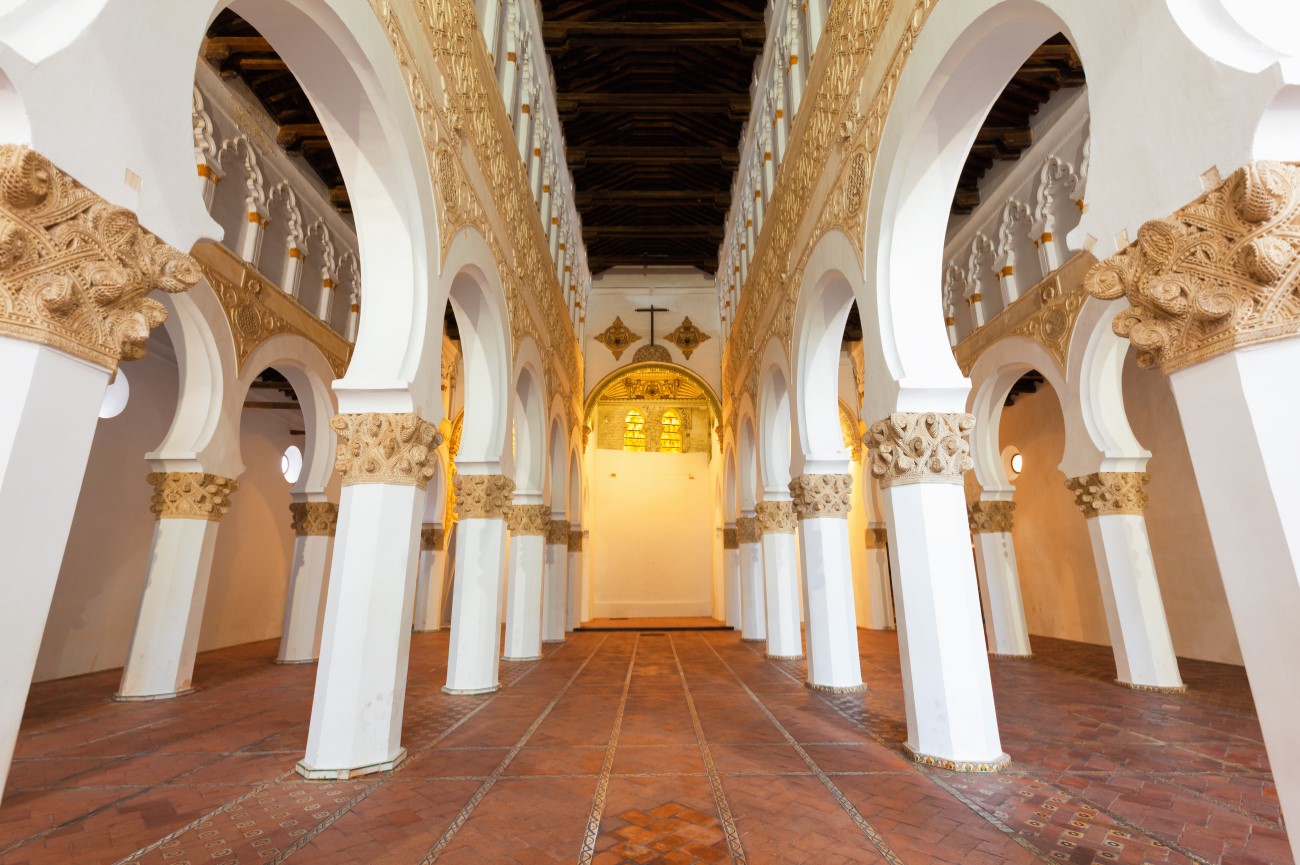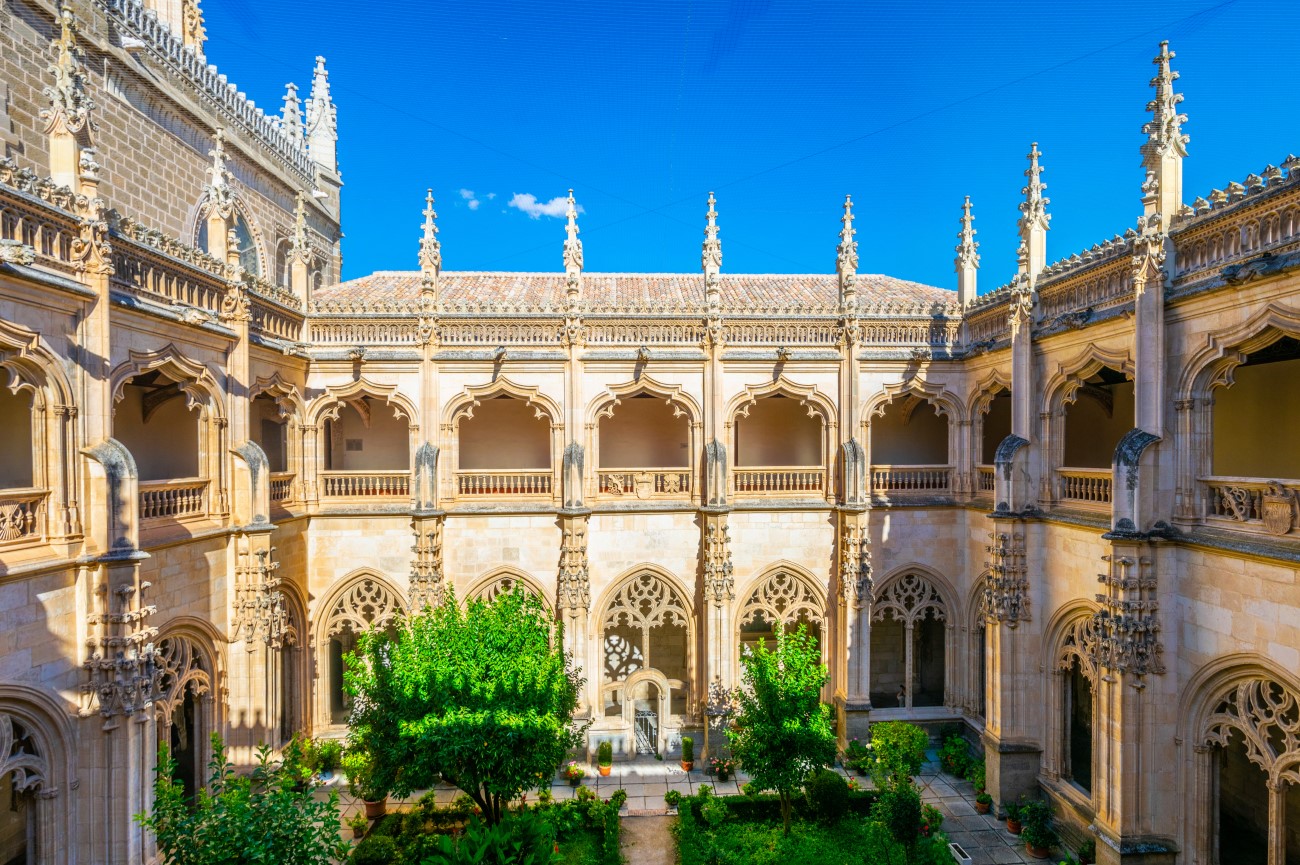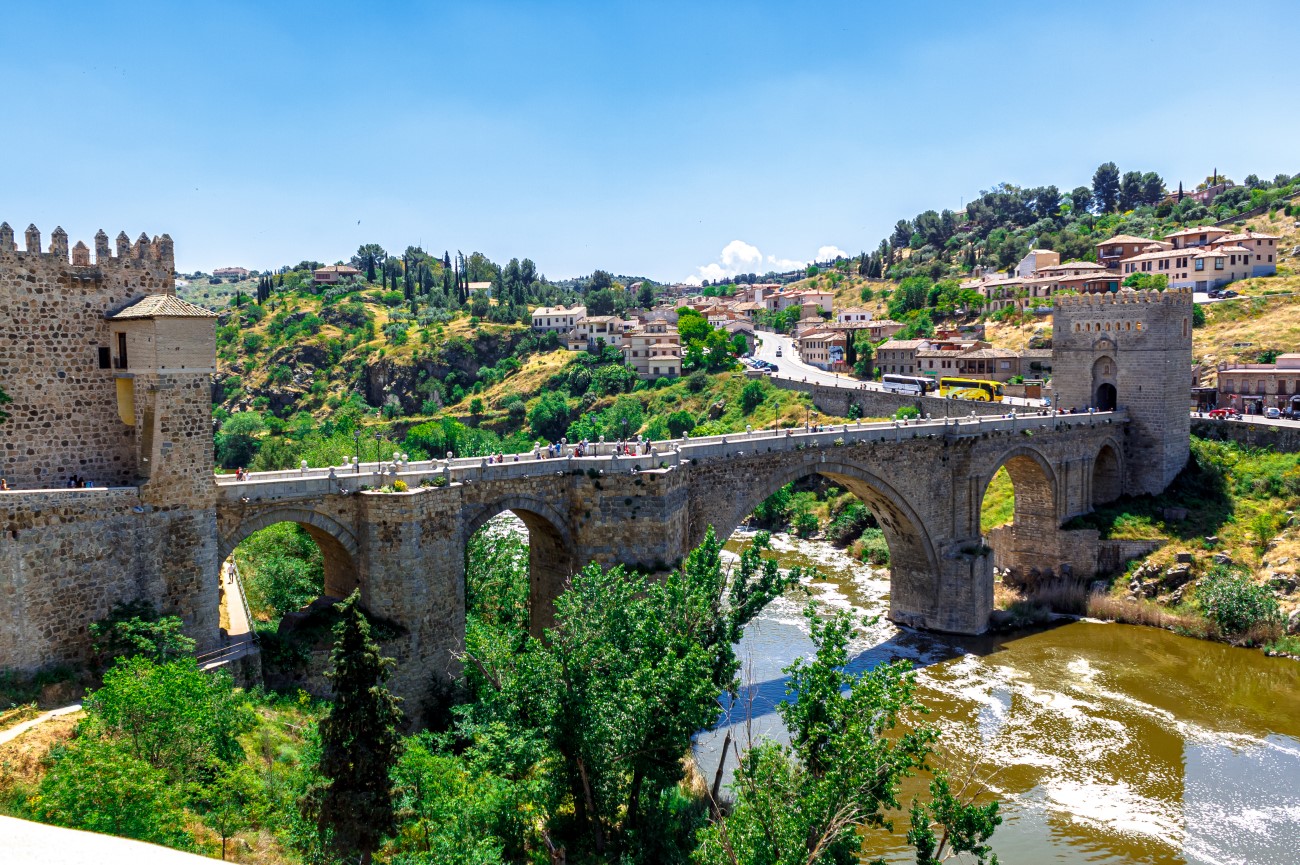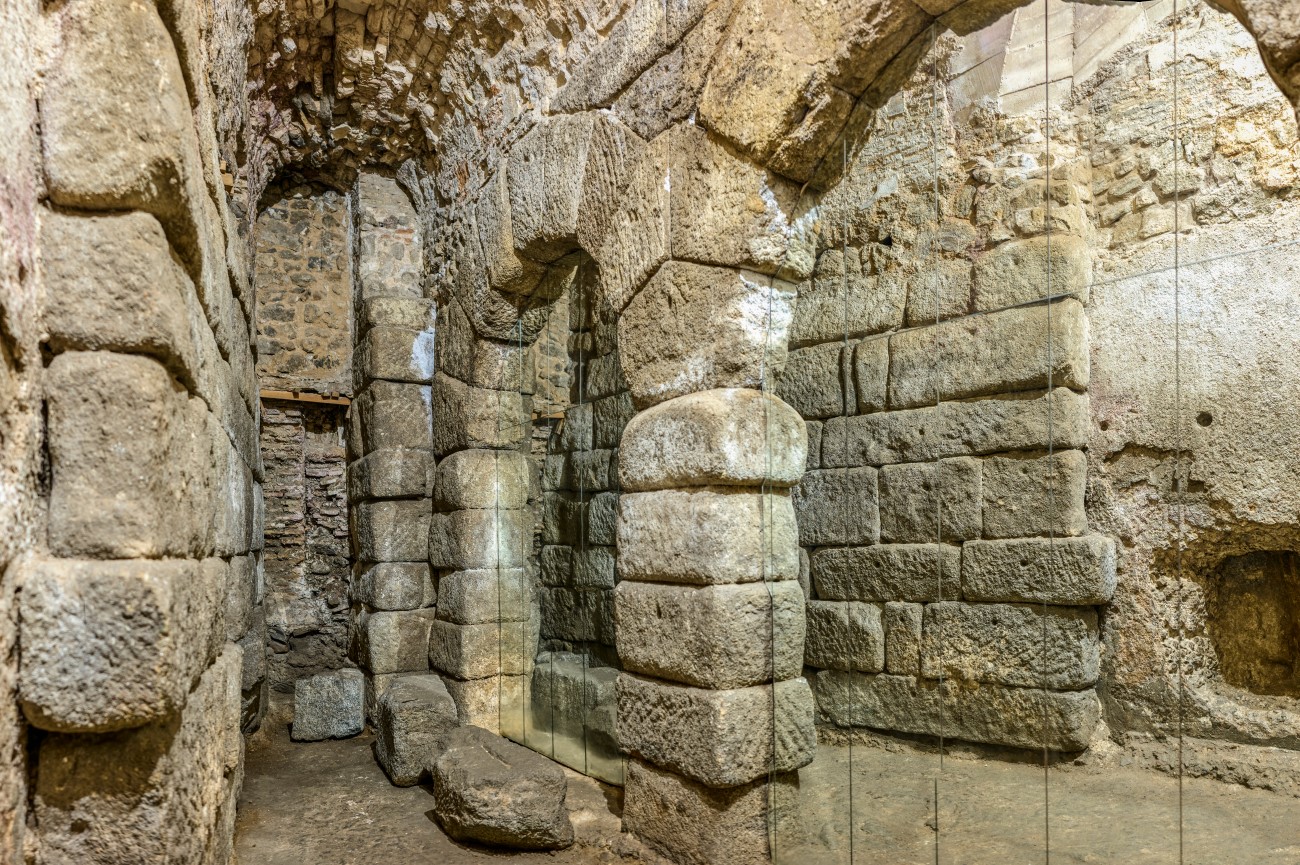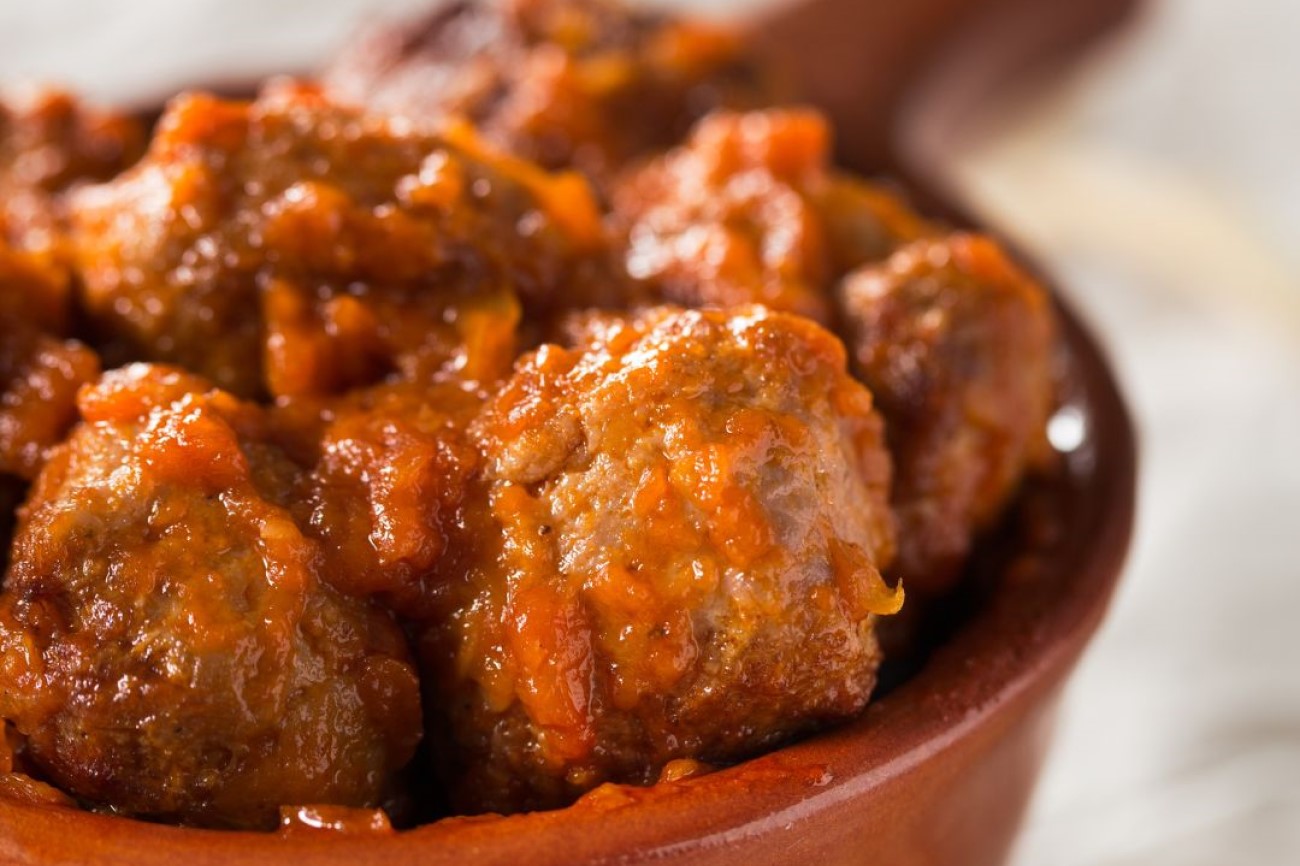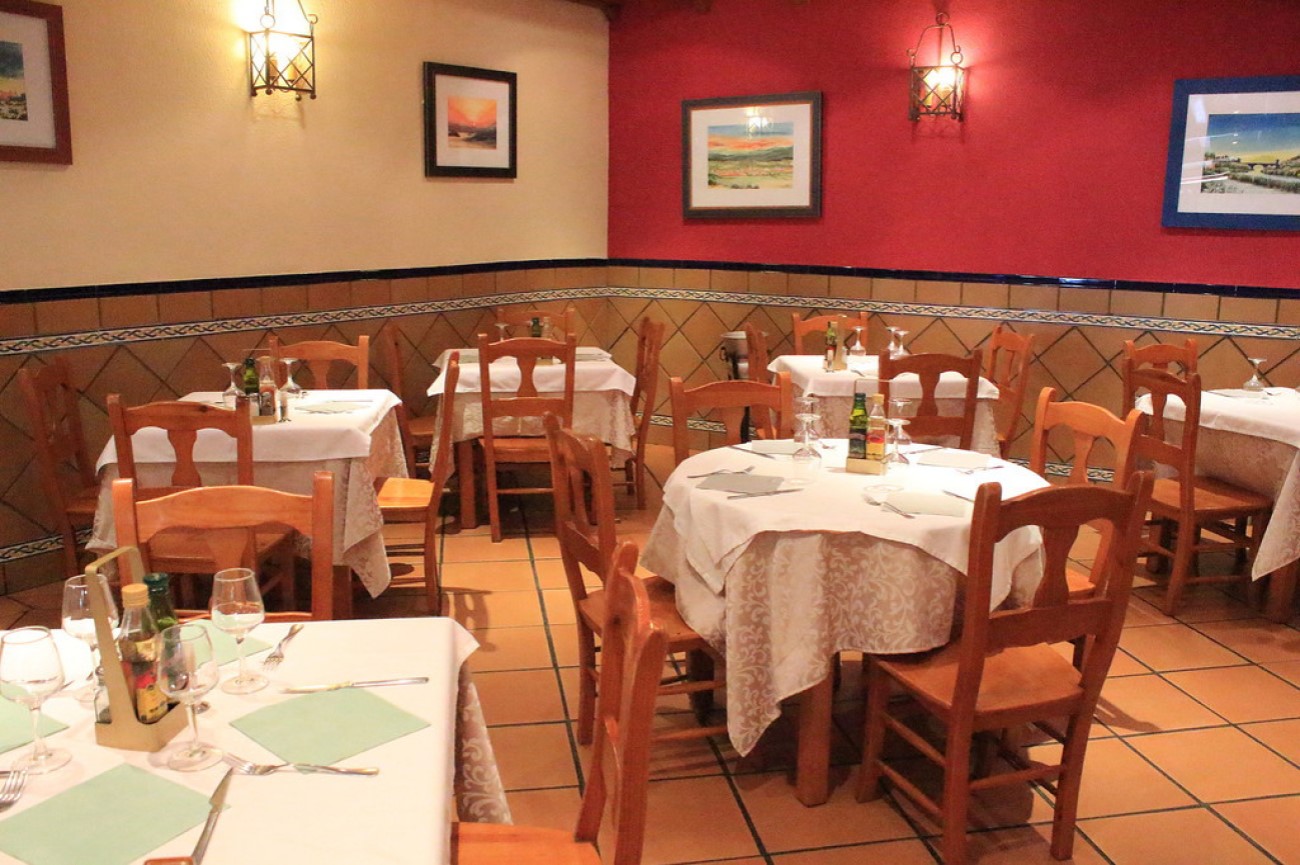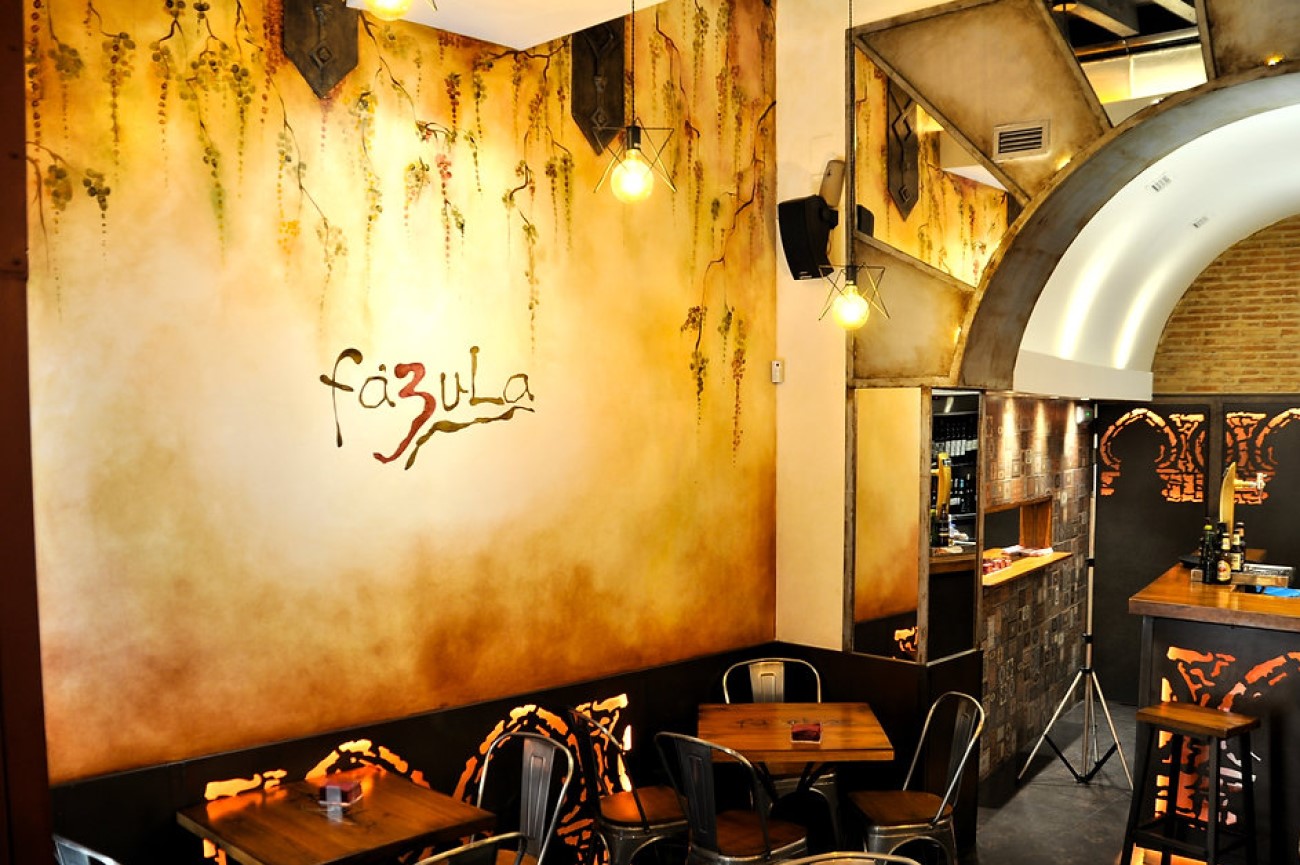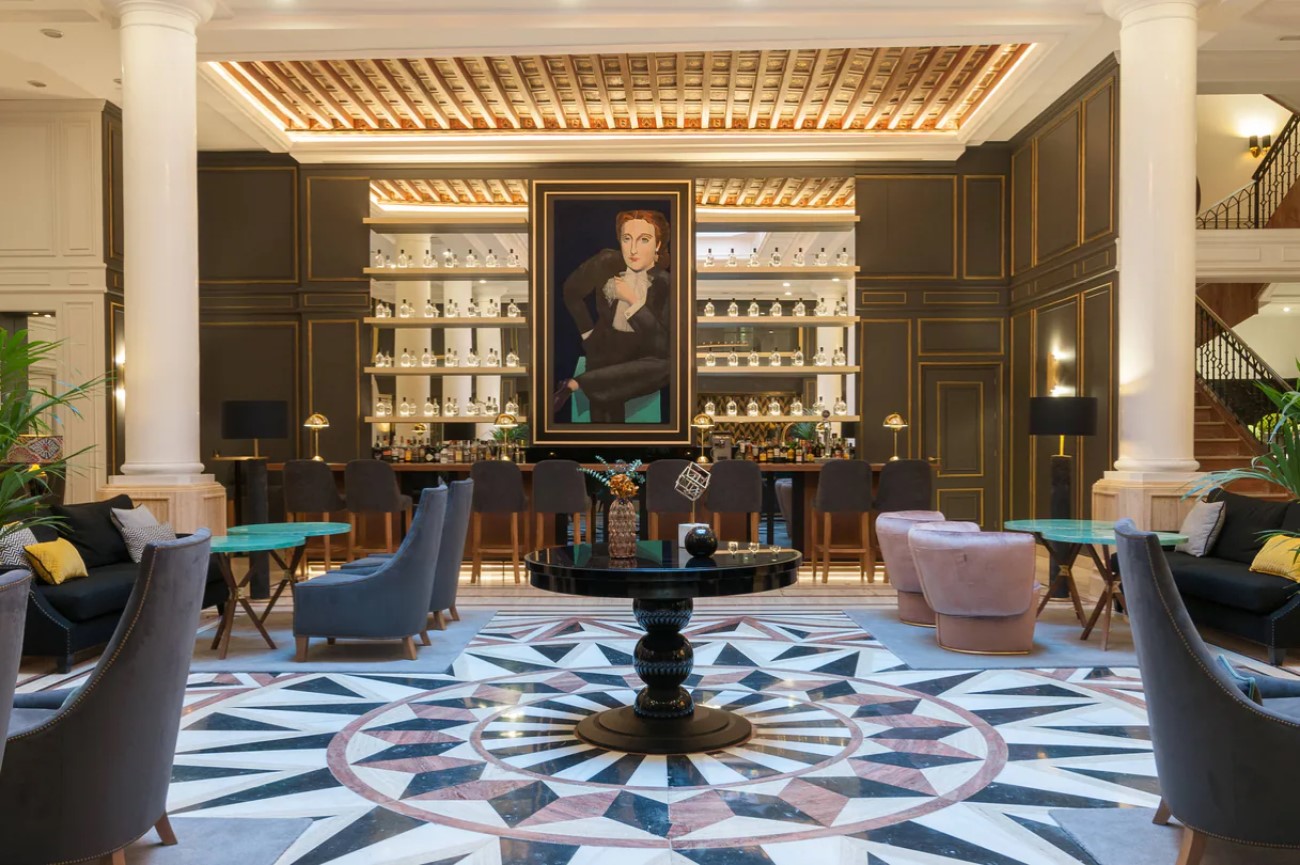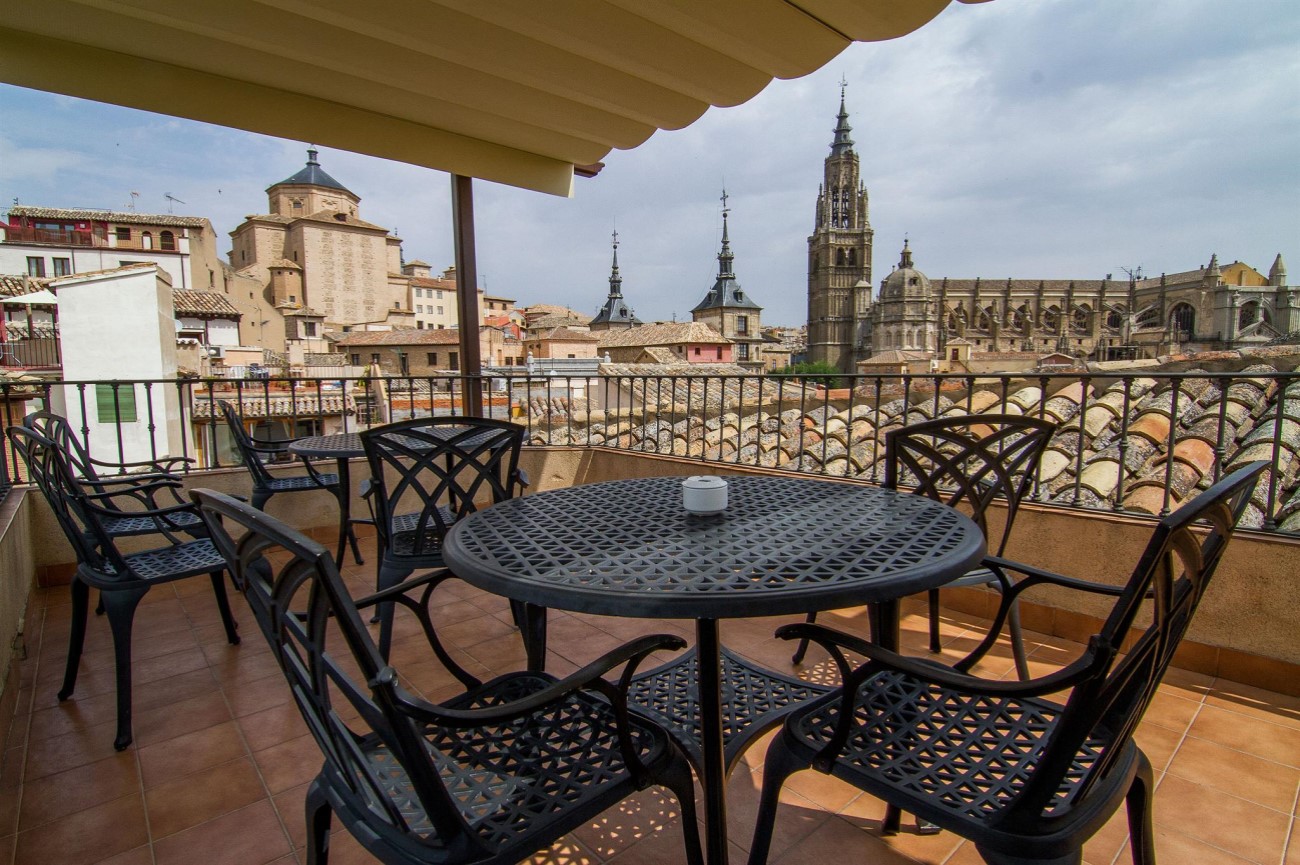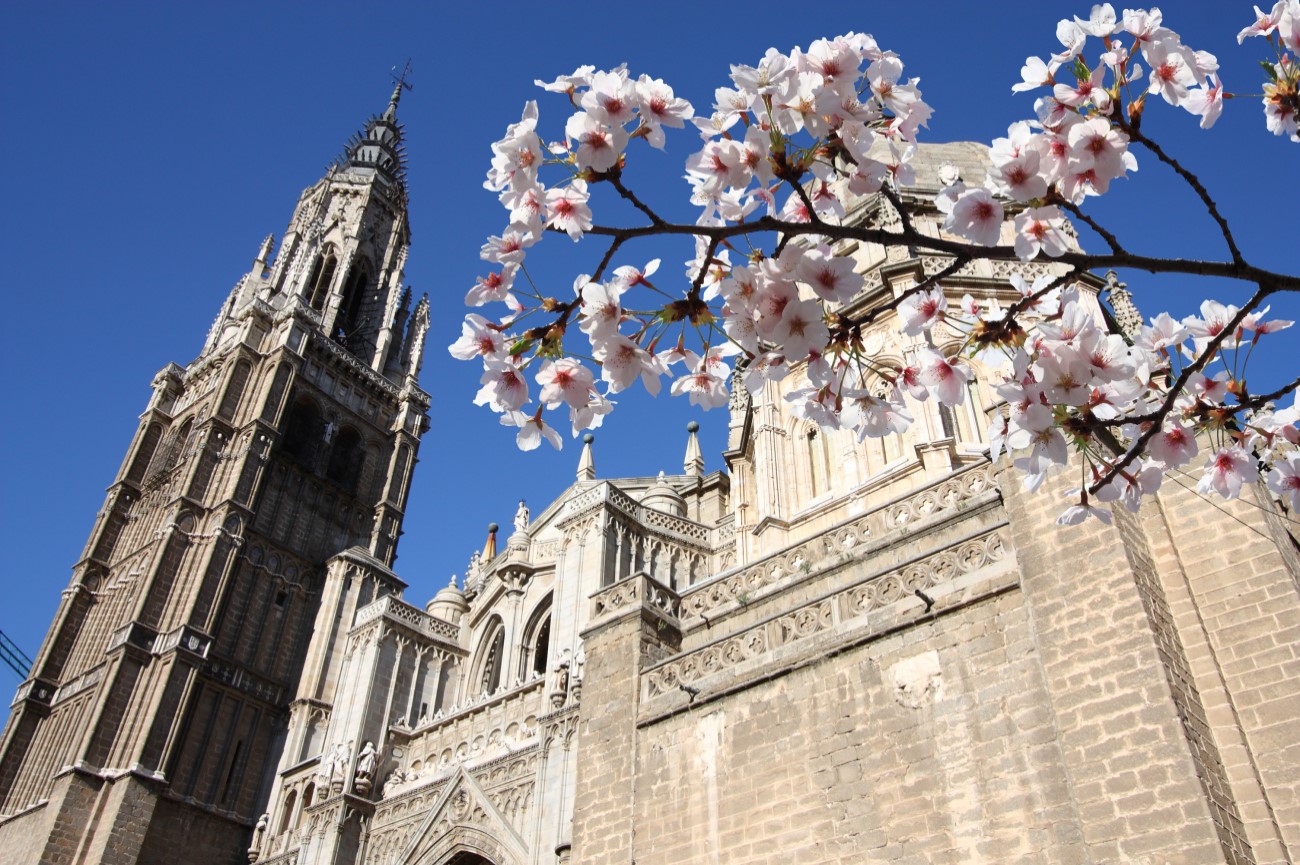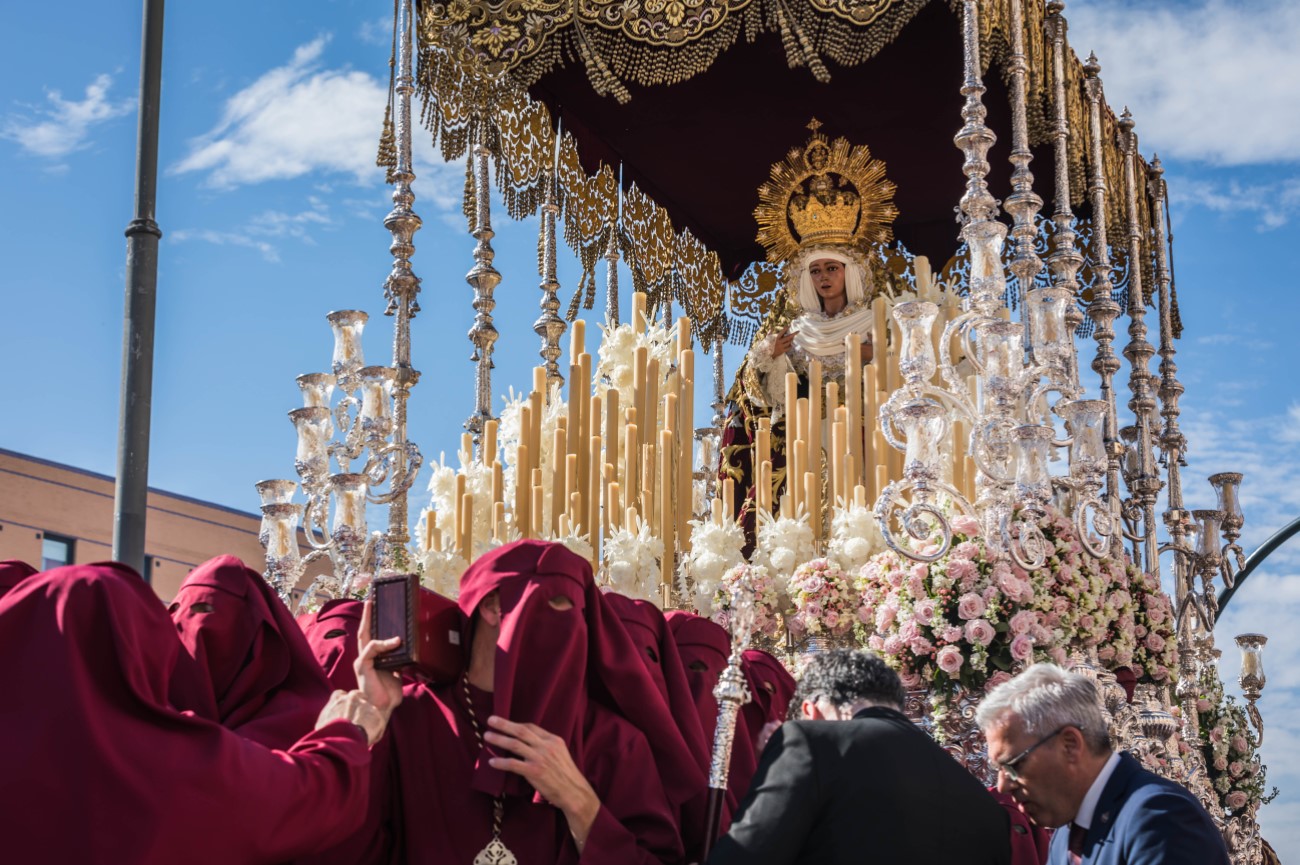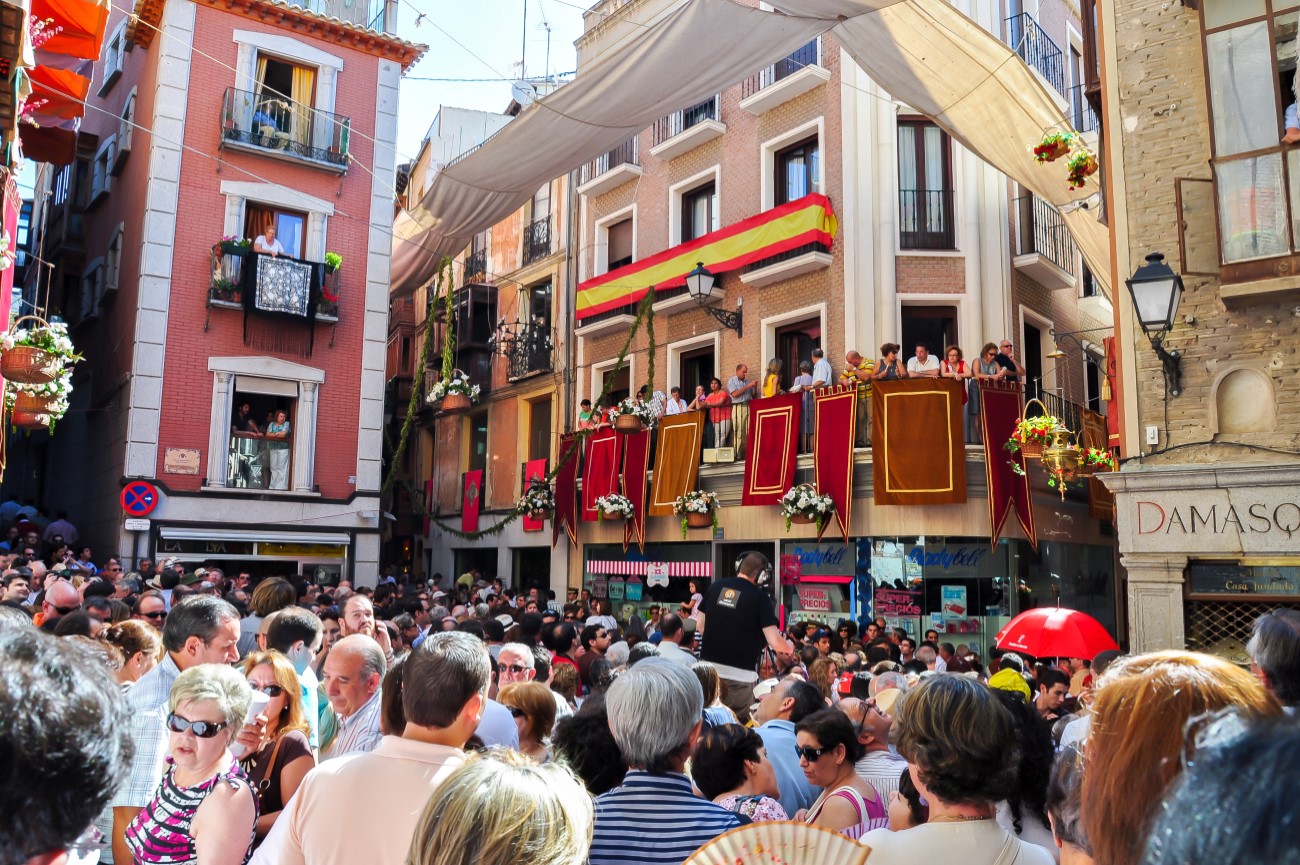Things to do in Toledo, Spain - 2-day itinerary
Standing on the banks of the Tagus river, Toledo is one of the most picturesque cities in Spain. It's often called the 'city of the three cultures' as Christian, Muslim and Jewish communities once gathered here. This cultural and religious diversity comes across in the city's monuments today, which include churches, mosques and synagogues. Alongside these, you'll find art museums featuring El Greco paintings and ancient relics dating back to the Roman era.
While most people visit Toledo as a day trip, it is worth staying overnight to experience the city in all its glory. Our two-day itinerary covers the best things to do in Toledo, including places to eat and iconic festivals.
Day 1

Morning: Puerta de Bisagra
Puerta de Bisagra was once the main entry point to the old town of Toledo. Dating back to the Moors, this magnificent structure gets its name from the Arabic Bab-Shagra, which roughly translates as 'the door that leads to the field'. On top of it, you can spot the city's coat of arms.
Mezquita del Cristo de la Luz
Continue walking towards the old town until you reach this striking mosque, one of the remaining traces of the Muslim occupation in Toledo. Established around AD1000, it still features traces of the Moorish arches and vaulting. If you pay close attention to the facade, you'll also notice early Arabic inscriptions. Following the Christian reconquest, the building was converted into a church, adding religious frescoes to the display.
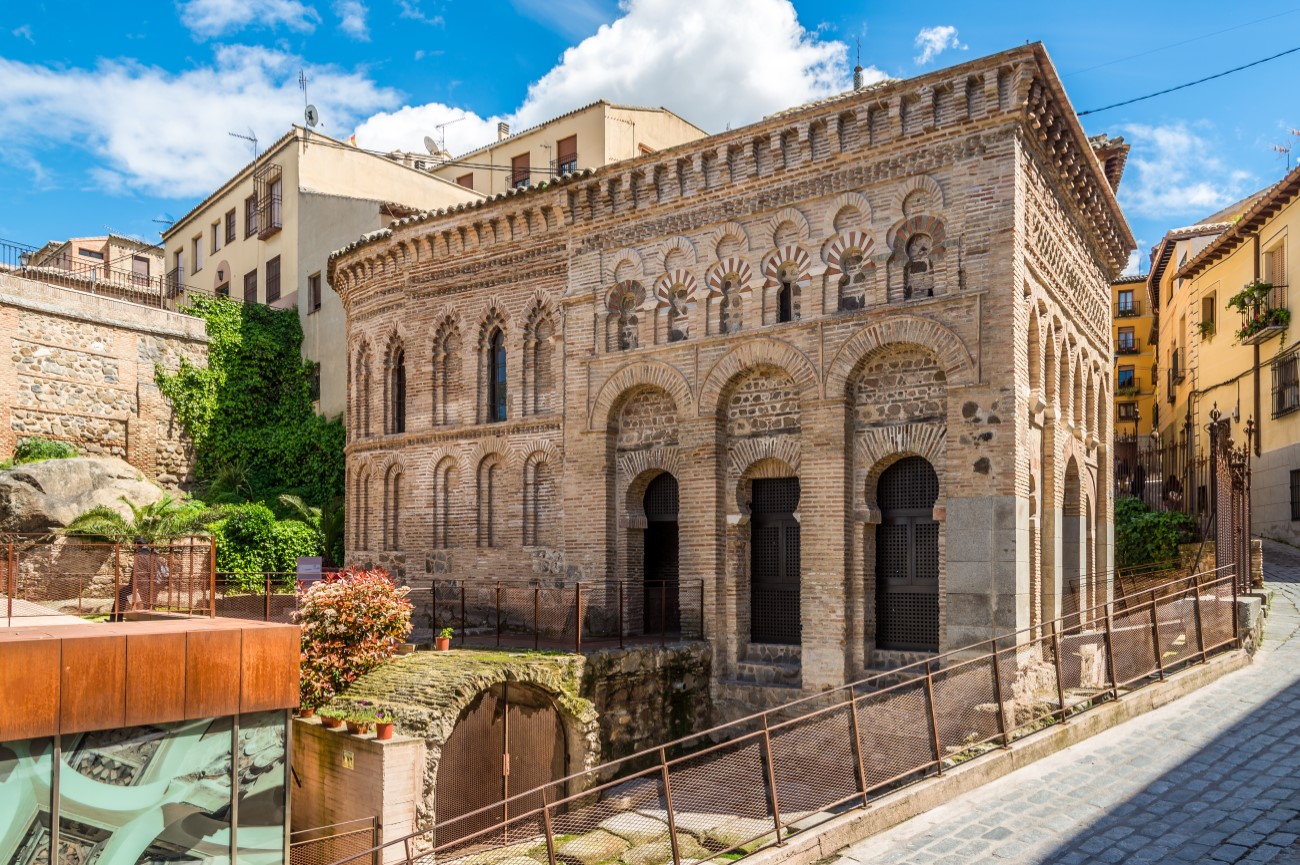 Mezquita del Cristo de la Luz (Mosque Cristo de la Luz) in old Town of Toledo, Castela-Mancha, Spain
Mezquita del Cristo de la Luz (Mosque Cristo de la Luz) in old Town of Toledo, Castela-Mancha, Spain
Plaza Zocodover
This lively square was once the site of the Arab souk, where the Moorish traded livestock. Later, it welcomed a general market, held here every Tuesday until the 1960s, when it moved to Paseo Merchán. The plaza also hosted bullfights and public burnings held by the Inquisition. Today people come here to hang out at the surrounding cafés or attend one of the more joyful festivities that take over the square every year.
Iglesia de San Ildefonso
Continue your tour around Toledo by visiting the Iglesia de San Ildefonso, one of the city's Baroque masterpieces, home to the city's patron saint. Construction started in 1629 and took nearly a century to complete. Some call it the Jesuit Church, as this was the religious order that founded it. Step inside to admire the bright white interior, the ornate altarpiece and the surrounding artworks and statues. Don't forget to climb up to the tower to take in the city views.
Afternoon: Catedral de Toledo
The Toledo Cathedral is among Spain's most striking Gothic buildings. Also known as the Santa Iglesia Catedral Primada de Toledo, it was completed at the end of the 15th century, with its construction lasting 200 years. Today it is one of the city's top landmarks and one of the most impressive cathedrals in the country. Inside, you can admire the typical rose windows and flying buttresses. Meanwhile, the sacristy holds works by famous artists such as Vélazquez, Goya and El Greco. For an extra fee, you can visit the bell tower and enjoy the panoramic views of Toledo.
Alcázar de Toledo
At the highest point of the city stands the imposing Alcázar de Toledo. This site has been occupied since the Roman era when a palace stood there. In the 10th century, the Moors erected a fortress, which was later taken over by Spanish royalty. Today it works as a military museum showcasing a collection of arms, uniforms and medals.
Puente de Alcántara
Established during the Roman Empire, the Puente de Alcántara is another highlight of Toledo. The bridge has been damaged and repaired countless times over the years. It features two brick arches with a Baroque triumphal arch and a castle tower standing on each end. From here, you get magnificent views of the river and the Alcázar up the hill.
Mirador del Valle
For an even wider view, cross over the river and walk to the Mirador del Valle. Locals often gather here to catch the sunset. From here, you can capture the river, the Alcázar, the cathedral and the maze of streets around it.
Day 1 - Toledo Tour Map
Day 2

Morning: Convento de Santo Domingo El Antiguo
Begin your second day with a tour of the Convento de Santo Domingo El Antiguo. This 11th-century monastery features one of El Greco’s first works in Toledo: The Assumption of the Virgin (1679). Alongside this iconic piece is the crypt of the painter himself, slightly hidden behind an iron grating.
Iglesia de Santo Tomé
Located on the site of a former mosque, this church still features original elements like the Mudéjar tower and scalloped arches. Inside there's a mix of styles with Moorish, Gothic and Baroque elements. Most people come here to capture the iconic masterpiece by El Greco named 'El entierro del conde de Orgaz' (The Burial of the Count of Orgaz).
Museo del Greco
A visit to the Museo del Greco is a must if you want to learn more about the influential Renaissance artist. Besides showcasing some of El Greco's top pieces, the museum also features works by other artists, including sculptures, paintings and furniture. Funny story: In the early 20th century, an aristocrat bought this building as he thought it was El Greco’s former house making an effort to return it to its original period style. However, El Greco never lived here.
Sinagoga del Tránsito
Sitting in the heart of the Jewish quarter is this 14th-century synagogue, one of the few remaining in Toledo. After the ejection of the Jews in 1492, the building was used as a church and military barracks. These days it houses the Museo Sefardí. The museum provides an insight into the Sephardic culture around Spain with exhibits dedicated to the history of Jewish culture, including archaeological finds, costumes and other artefacts. You can also admire classic Mudéjar features, including Arabic and Hebrew calligraphy, geometric tilling and stucco walls with striking ornaments.
Afternoon: Sinagoga de Santa María La Blanca
Another synagogue worth visiting is the Sinagoga de Santa María de la Blanca. It features five naves divided by rows of horseshoe arches with stunning ornate capitals. Women used to stand in the upper rooms to pray, while men would occupy the ground floor. This is one of the oldest synagogues in Europe, dating back to the 12th century. When the Jewish community got chased away, the building was turned into a church, then a monastery and lastly, a warehouse for a company that made estoques (bullfighting swords).
Monasterio de San Juan de los Reyes
A few steps away is the Monasterio de San Juan de los Reyes. This Franciscan monastery was originally going to be a royal mausoleum and serve as a memorial for the victory at the Battle of Toro. It was provocatively inserted into the heart of the Jewish quarter by the Catholic monarchs Isabel and Fernando in the 15th century. The architecture is a perfect example of the Isabelline style that spread through Spain in that period. Step inside and wander through the many chapels, making sure to look up to admire the Mudéjar-style ceiling. Another highlight is the cloister which perfectly mixes late Gothic and Mudéjar features.
Puente de San Martín
End your visit to Toledo with an evening walk along the Puente de San Martín. First erected in the 1200s, the bridge underwent several renovations, with the last change dating to the 17th century during the reign of Charles II. According to a local legend, the day before the bridge's inauguration, the architect who designed it realised he had miscalculated some measures and thought the bridge was at risk of collapsing. To protect her husband, the architect's wife burnt down the bridge at night during a thunderstorm, making it look like it had been struck by lightning. A statue of her now stands in the middle of the bridge.
Day 2 - Toledo Tour Map
Top things to do with kids in Toledo
If you're travelling to Toledo with kids, make sure to choose a season that isn't too hot, as this will make it easier to explore the city on foot. Some iconic sights worth visiting include the Cathedral and the tower of San Ildefonso. Alternatively, you can explore hidden gems like the Cueva de Hércules, an underground cave dating back to the Roman era. Older kids will enjoy sliding down the zip line near the San Martín bridge, organised by Fly Toledo. Some museums may also organise workshops for the little ones.
Where to eat in Toledo
Toledo’s diverse cultural background has also influenced its cuisine. Specialities include game dishes like venison or partridge, plus roasted pork and lamb, usually served in stews. Within the sweet section is the famous Toledo marzipan, made with almonds, sugar and egg yolk. Below are some of the best places to eat in Toledo:
- Lo Nuestro: This cosy tavern offers a mix of traditional Castilian dishes like the carcamusas (pork stew served in a clay casserole) and red partridge. There’s also marzipan for dessert and local craft beers.
- El Peñón: Head here to sample delicious homemade dishes like pork stew or artichokes. At lunch, they offer an affordable set menu.
- La Clandestina: This contemporary restaurant provides several dining areas, including a garden, a tavern and a basement. The menu features locally-sourced ingredients with specialities like the suckling pig and the deer croquettes.
- Restaurante Fábula: Set near the Convento de Santo Domingo El Antiguo, this tavern is famous for its generous portions. Highlights include the Galician beef and the roasted lamb. They also serve tasty desserts like the torrija (similar to French toast) with ice cream.
Where to stay in Toledo
- Eugenia de Montijo (5 stars): This luxury hotel is only a few steps away from the old town. Guests can choose between twin or king-size beds, and some rooms offer city views. Other facilities include a lobby bar, a restaurant, a fitness centre and a spa.
- Hotel Boutique Adolfo (4 stars): Housed in a renovated 20th-century building, this boutique hotel is located right on Plaza Zocodover. From here, you can access many of the city's top attractions on foot like the Alcázar. It features 12 rooms, all of which face the square. There’s also a restaurant and a terrace.
- Hotel Santa Isabel (2 stars): Overlooking the Toledo Cathedral, this two-star hotel is a budget-friendly alternative. Guests can climb up to the terrace for panoramic city views. Breakfast is also available.
Best time to visit Toledo
Toledo has a changing climate with very cold winters and hot and dry summers. Indeed, the daily temperature can reach as high as 40ºC in the summer and below zero in winter. As such, the best time to visit Toledo is around spring, early summer or autumn. Avoid July and August, as the heat makes it unbearable to walk around.
Toledo Festivals
- Semana Santa: The Holy Week, or Semana Santa, is celebrated all over Spain. Celebrations begin with Palm Sunday, where statues of saints on floats parade through the streets of the old town. The festivities end on Easter Sunday with the cathedral ringing its bells.
- Festival of Corpus Christi: Taking place on the Sunday of the ninth week after Holy Week, this is one of the oldest festivals in Toledo, dating back to the 13th century. Preparations begin five weeks ahead, as the city's streets get decorated with wreaths and lanterns. Closer to the day of the festival, locals adorn their houses with tapestries, and the ground is covered with flowers and fragrant herbs. The highlight is the procession led by the Archbishop that departs from the cathedral.



